From Rags to Richess
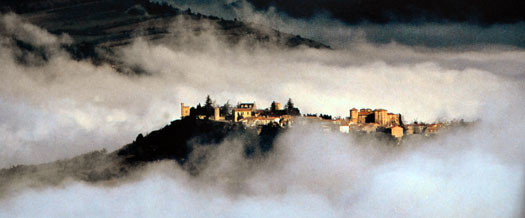
At the end of the 19th century, Bérenger Saunière, the poor parish priest of Rennes-le-Château, all of a sudden started spending a lot more money then he could ever have earned performing his normal duties. He had been assigned to this tiny village in the south of France at the age of 33 and had spent his first few years there in piety and poverty. According to his meticulously kept accounting books, in February 1892 he had a debt of 105 francs and 80,65 francs in his ‘fonds secrets’ (savings). That all changed in the 1890s. From that time on his surviving papers and accounts record a total expenditure of some 660,000 francs, equivalent to EUR 2,500,000 today. He would spend up to 50,000 francs in one month in some periods. His salary as a priest was 900 francs per annum. Towards the end of his life he seems to have had some difficulty paying his bills but weeks before his death he appears to have been making plans once again. Saunière’s financial difficulties coincide largely with the World War I, an indication he couldn’t reach his funds abroad?
It’s often said Saunière got his fortune by committing simony or mass trafficking: requesting money for masses he never said. There’s clear evidence that he was guilty of this practice like so many of his colleagues at the time. However, the amounts of money he spent are in no relation to his illegal income from this practice. Detailed analysis of his records has taught he received 110,000 requests to say mass, which is a lot more than he ever could have said when you think a priest could say 3 masses in one day (and didn’t hold sermons every day of course). The going rate for a mass was 1 franc around 1880, increasing up to 1.5 francs at the time of his death. From this he could have earned no more than some 150,000 francs which only accounts for less than a quarter of his recorded spenditure (and which was only part of what he really spent). Saunière’s income is further dissected in this article.
The Silent Witness
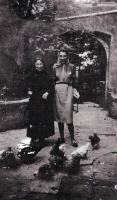
Birth of a Mystery
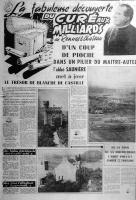

Today it is almost impossible to distinguish the truth from fantasy. However, most of the leading theories are losely based on facts and legends of the area that can be traced or demonstrated. The half truth is the most difficult to dissect.
The Mystery’s historical roots
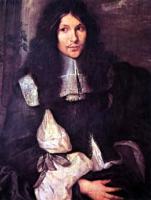
He and I discussed certain things, which I shall with ease be able to explan to you in detail – things that will give you, through Monsieur Poussin, advantages which even kings would have great pains to draw from him, and which, according to him, it is possible that nobody else will ever be able to rediscover in the centuries to come. And, what is more, these are things so difficult to discover that nothing now on this earth can prove of better fortune nor be their equal.
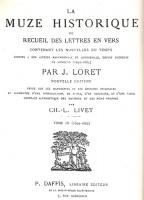
There must have been something interesting enough in this region to attract the attention of so many rich and powerful people. The link with Poussin comes full circle with Louis XIV acquiring his famous painting the Shepherds of Arcadia in 1685 from C.A. Herault, a well known arts dealer at the time. The painting adorned the king’s private chambers until his death.
What Bérenger Saunière appears to have found
There are numerous theories and ideas as to what Saunière found. Several instances have been recorded in which Saunière made reference to something like a treasure. For example Antoine Beaux, Abbé of Campagne-sur-Aude was attending a dinner party at Saunière’s table once. He remarked “My friend, to see you doing so well, one would think you found a treasure”. To this the host appears to have answered: “Me l’an donat, l’ai panat, l’ai parat é bé lo teni“. It’s Saunière’s dialect of the Langue d’Oc. In modern French it means “Ils me l’ont donné, je l’ai pris, je l’ai apprêtré; eh bien, je le tiens bien.” An English translation would be: “They gave it to me, I took it, I made it work and I will hold onto it.”
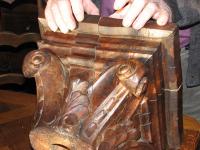
The story that Saunière found documents in the hollow visigothic altar pillar is most probably not true. Research reveals that there was no hollow space inside that pillar so it seems unlikely that is true.
A last story is that Saunière found a pot filled with golden coins and a golden chalice during the renovations. This too apparently happened during the renovation work on the church altar. Saunière immediately sent the workmen off for the rest of the day. When he was asked what it was they found he replied that it was nothing but a collection of worthless religious medals. The Abbé did give a golden chalice from the time of Bigou to his friend Eugène Grassaud. The chalice still exists. It was donated to the church of Rennes-le-Château by the Order of the Knights of Malta around 1750. As it appears his predeccessor Antoine Bigou stashed it away in the church before he fled to Spain to escape the French Revolution.
From these stories it seems likely that Saunière did indeed find some coins, a chalice and one or more documents. The documents either led him to a secret entrance to the old crypt of the Eglise Madeleine (for example via a fake grave of Marie de Nègre) or to another location where he found something that brought him fortune.
The documents Saunière is believed to have found are often referred to as being…
1. A parchment containing the genealogy of King (Saint) Dagobert II from 681 to 1244, when Jean VII married Elsinde de Gisors. The document is dated 14th March 1244 and carries the seal of Blanche of Castille, Queen of France
2. The testament of François-Henri d’Hautpoul, Lord of Rennes and Bézu, with attached a genealogy of the Merovingian descendants from 1200 to 1644, where 6 lines of descent are related to Saint Vincent de Paul. This document is dated 23rd November 1644 and is signed by Captier, Notaire at Esperaza
3. The testament of Henri de Hautpoul, dated 24th April 1695, in which five saint are invoked of which Saunière later put statues in his church
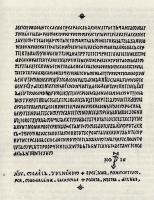
In his book Rennes-le-Château, le puzzle reconstitué (2007), Jarnac and French researcher Franck Daffos build a plausible case that the last mentioned parchments actually existed and where sold off by Noel Corbu.
What kind of Treasure could there have been?
Again, numerous possibilities and stories go around. If you disregard those about UFO’s and extraterrestrial visitors there are a number of options. The area around Rennes-le-Château is drenched in a history of bloodshed and treasure. Visigoths, Templars, Cathars and assorted scoundrels, clerics and adventurers roamed the area at different times in history. It is not unthinkable that some of the treasure that these groups brought with them or accumulated was left behind in the region. The accounts that are underpinned with some sort of theory and evidence to at least identify them from pure fantasy are mentioned here. Saunière found:
- the Crypt of the Lords of Rennes beneath his church. If the genealogies are correct, it might even have been the Crypt of one or more Merovingian royals, buried with the artifacts and treasure that was the custom of the time
- a treasure hidden in 12 places supposedly cryptically coded into the book The True Celtic Language and the Cromleck of Rennes-les-Bains by Saunière’s colleague Abbé Henri Boudet of Rennes-le-Bains
- the treasure of the Visigoths, containing the treasure of the temple of Jerusalem, that roman emperor Titus took from the Holy Land in ad 70. and Alaric I, in his turn took from Rome during the sack of 394
- the treasure of the Cathars. When the last Cathar bastion of Montségur fell, the besieging royal troops found nothing of the famous Cathar treasure. Shortly before the surrender four man three men were lowered down from the ramparts by ropes under cover of the night. According to local legend they carried with them the Holy Grail
- the treasure of the Knights Templar. The Templars had a presence in the region. There was a commandery at Campagne-sur-Aude and an observation post on Mount Bézu. The Templars weren’t allowed to have personal belongings so their treasures that belonged to the order were passed on through the ages without anyone being able to get their hands on it. Anything belonging to the Templars has always inspired great fear in those who had to guard it or had reason to approach it
- the treasure of Blanch of Castille. The mother of Saint Louis, regent of France, came to Rédé (Rennes-le-Château) in 1249 loaded down with innumerable items of baggage. Supposedly, according to one of the alleged parchments, this baggage was buried in an underground passage below the former Château of the Counts of Voisin and then walled in
- evidence that the Merovingian bloodline is unbroken. Allegedly, after the murder of Dagobert II and his family in 679 by orders of Pepin the Fat, a son survived named Sigisbert IV that found refuge in Rhedae (Rennes-le-Château) to become lord of the region. This would mean that the Merovingian bloodline had survived to this day with a legitimate claim to the French throne. In 1791, when Saunière’s predecessors had to flee the revolution to Spain this would indeed have been explosive news
- evidence that Jesus didn’t die on the cross but was in fact married to Mary Magdalene. After the crucifixion that either he survived or during which a replacement figure died, Marie Magdalene came to France carrying her offspring that later became the Merovingians or intermarried with them. Saunière supposedly blackmailed the Vatican with this evidence who paid him for his silence
- the tombs of Jesus and Joseph of Arimathea in the vicinity of Opoul Perillos, as indicated by a miniature model of the Holy Places Saunière allegedly ordered just before his death and that was never finished
- the tomb of Mary Magdalene and perhaps even one or more of her children in the vicinity of Rennes-le-Château, perhaps in the Grotto locally known as the Grotte du Fournet, Dite de la Magdeleine or Burial Site of Mary Magdalene
- evidence that the Ark of the Covenant or at least its contents survived the ages and is hidden or was hidden below the church of Rennes-le-Château in the old crypt of the Hautpoul-Blancheforts. It was taken there from Notre Dame de Marceille between 1893 and 1902 by its keepers Saunière, Boudet, Gélis and Billard. This hypothesis is a lot less far-fetched than it sounds when you have read the meticulously constructed and carefully researched book ‘The Holy Grail and the Ark of the Covenant‘ by acclaimed Dutch writer Klaas van Urk, in which his brother and he documented their ten-year chase of the Ark’s trail through history. Sadly his book is only available in Dutch for the moment.
- two genealogies from 1244 and 1644 that were bought by the the Vatican after which they kept giving him large amounts of money to continue his search though their aid Henri Boudet. The Vatican hoped Saunière would find the Ark of the Covenant that had been lost for over 600 years.
- money and valuables stashed away by the noble families of the region when they had to flee the country from the French Revolution
- evidence that the 19th century Maria apparitions where staged by a secret society with a legitimist cause to get the Henry V and the Bourbon dynasty back on the throne of France
- the mummified body of Christ, Mary Magdalene or both is buried in the region somewhere
- the Arma Christi (the instruments used during the Passion of Christ) were kept in Notre Dame de Marceille and Rennes-le-Château by a group of Fransciscan Ebionites.


